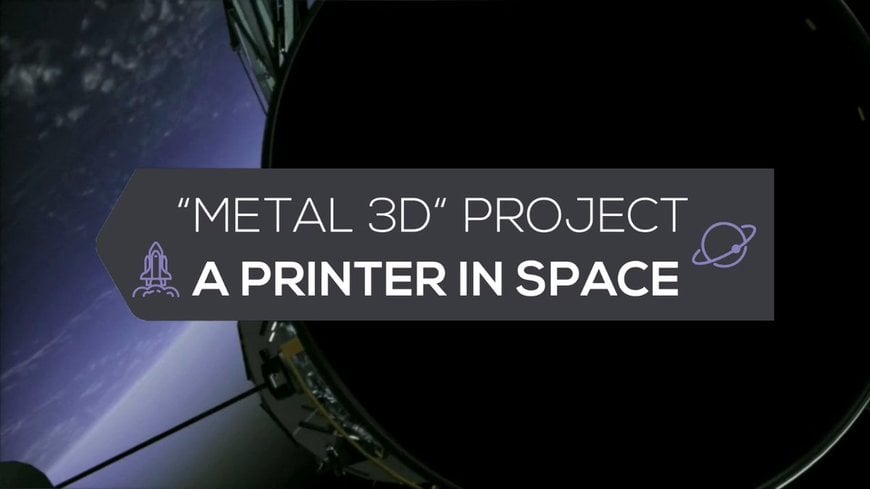www.ptreview.co.uk
22
'22
Written on Modified on
AddUp will help bring metal 3D printing to space
AddUp is part of the ambitious “Metal3D” project, which pur- pose is to create a 3D printer that will produce the first me- tal parts in space. This project is led by the European Space Agency (ESA), Airbus Defense and Space, and other industrial and academic partners such as Highftech Engineering and Cranfield University.

In just a few months, metal parts will be printed on a very special printer. For the first time in history, a custom-made machine will be installed on board the International Space Station (ISS) within the Columbus module and be the first of its kind to be able to print from space. This project, one of the most exciting projects of the 3D printing industry, is called “Metal3D”.
The partners of this project
Metal3D is a large-scale project that involves several entities. The ESA commands the mission and plays the role of the client in this project. Project management is provided by the Airbus Defense and Space teams in Toulouse. Their teams ensure the integration of the various components of the printer, the power supply, and the conformity for the space environment. Cranfield University oversees the energy source and material delivery mechanism. In the case of «Metal3D», this includes a laser and stainless-steel wire.
The company Highftech is tasked with the manufacturing of the machine enclosure and integrating the machine’s fluid management. Finally, AddUp makes the internal structure and mechanisms of the machine, the PLC that controls it, and the interface that allows communication with the ground.
Alexandre Piaget, R&D engineer at AddUp, testifies: “AddUp plays an important role in the realization of this mission, but its involvement in the project goes back to the pre-project phase where the feasibility of the project had to be demonstrated. This first part, carried out on the premises in Salon de Provence, built the foundations of what the machine is today. In the final version of the machine, AddUp is in charge of the mobile axes, the structural parts and the software of the machine.”
On the mechanical side, AddUp’s experts designed and manufac- tured the internal structure of the machine, including all moving parts. On the software side, they developed the machine’s automa- tion program, which includes functions such as communication with the ground (sending of data, measurements, images and reports, and execution of commands received from Earth).
The mission: characterization of the metal
“Metal3D” is commissioned by the European Space Agency as a technology demonstrator. The purpose is to characterize the mecha- nical properties of a material shaped in microgravity. To carry out this experiment, two batches of test specimens will be produced by two identical printers. While the first batch will be made in Toulouse in ter- restrial gravity, the second will be built in space, within the Columbus module of the ISS in microgravity. To produce these two printing pro- jects, two identical copies of a metal 3D printing machine capable of operating in both environments have been designed and produced. The printer that has been designed for this mission will therefore be the first to print metal parts in space.
The challenge: production under microgravity
In the absence of gravity, most current additive manufacturing pro- cesses are no longer usable. This is either because they are not compatible with the space environment (the use of fine powder is dangerous in the space station), or because their implementation is conflicting with microgravity (powder-bed technologies for example). To make manufacturing in microgravity possible, the partners have chosen to use a process that promotes forces induced by surface tension: this is the wire-laser combination (W-DED). A laser will be used as the energy source and a 316L stainless steel wire as the raw material. The laser and the wire feeding system are fixed in the ma- chine frame and the printing table is made movable by 3 linear axes and 1 rotary axis. The machine is operated under nitrogen to limit the oxidation of the material and to prevent the risks of combustion. As access to nitrogen is limited in the ISS, the machine’s atmosphere is filtered and cooled throughout the manufacturing process to limit ni- trogen consumption and recycle as much as possible of the nitrogen already present in the machine.
www.addupsolutions.com

